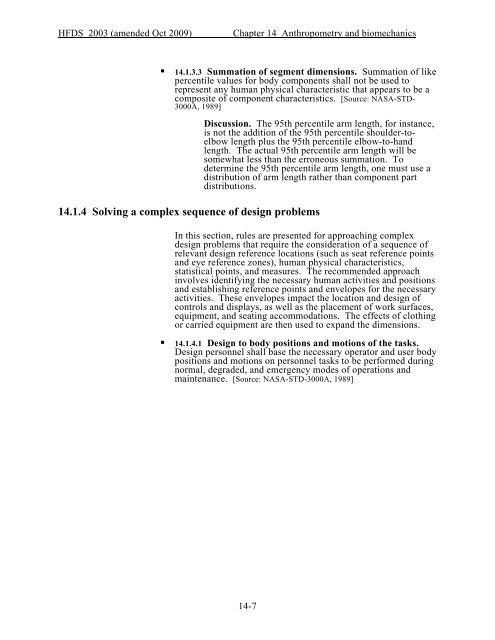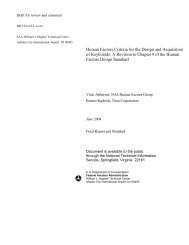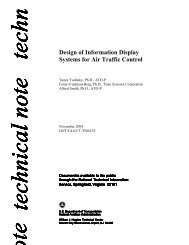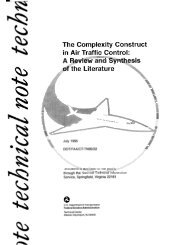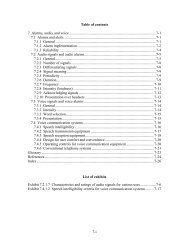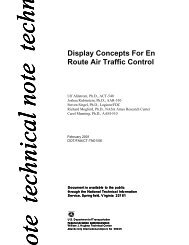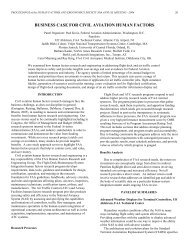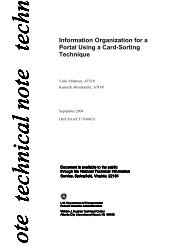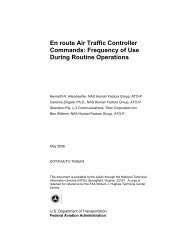Chapter 14. Anthropometry and Biomechanics - FAA
Chapter 14. Anthropometry and Biomechanics - FAA
Chapter 14. Anthropometry and Biomechanics - FAA
You also want an ePaper? Increase the reach of your titles
YUMPU automatically turns print PDFs into web optimized ePapers that Google loves.
HFDS 2003 (amended Oct 2009)<strong>Chapter</strong> 14 <strong>Anthropometry</strong> <strong>and</strong> biomechanics• <strong>14.</strong>1.3.3 Summation of segment dimensions. Summation of likepercentile values for body components shall not be used torepresent any human physical characteristic that appears to be acomposite of component characteristics. [Source: NASA-STD-3000A, 1989]Discussion. The 95th percentile arm length, for instance,is not the addition of the 95th percentile shoulder-toelbowlength plus the 95th percentile elbow-to-h<strong>and</strong>length. The actual 95th percentile arm length will besomewhat less than the erroneous summation. Todetermine the 95th percentile arm length, one must use adistribution of arm length rather than component partdistributions.<strong>14.</strong>1.4 Solving a complex sequence of design problemsIn this section, rules are presented for approaching complexdesign problems that require the consideration of a sequence ofrelevant design reference locations (such as seat reference points<strong>and</strong> eye reference zones), human physical characteristics,statistical points, <strong>and</strong> measures. The recommended approachinvolves identifying the necessary human activities <strong>and</strong> positions<strong>and</strong> establishing reference points <strong>and</strong> envelopes for the necessaryactivities. These envelopes impact the location <strong>and</strong> design ofcontrols <strong>and</strong> displays, as well as the placement of work surfaces,equipment, <strong>and</strong> seating accommodations. The effects of clothingor carried equipment are then used to exp<strong>and</strong> the dimensions.• <strong>14.</strong>1.4.1 Design to body positions <strong>and</strong> motions of the tasks.Design personnel shall base the necessary operator <strong>and</strong> user bodypositions <strong>and</strong> motions on personnel tasks to be performed duringnormal, degraded, <strong>and</strong> emergency modes of operations <strong>and</strong>maintenance. [Source: NASA-STD-3000A, 1989]14-7


